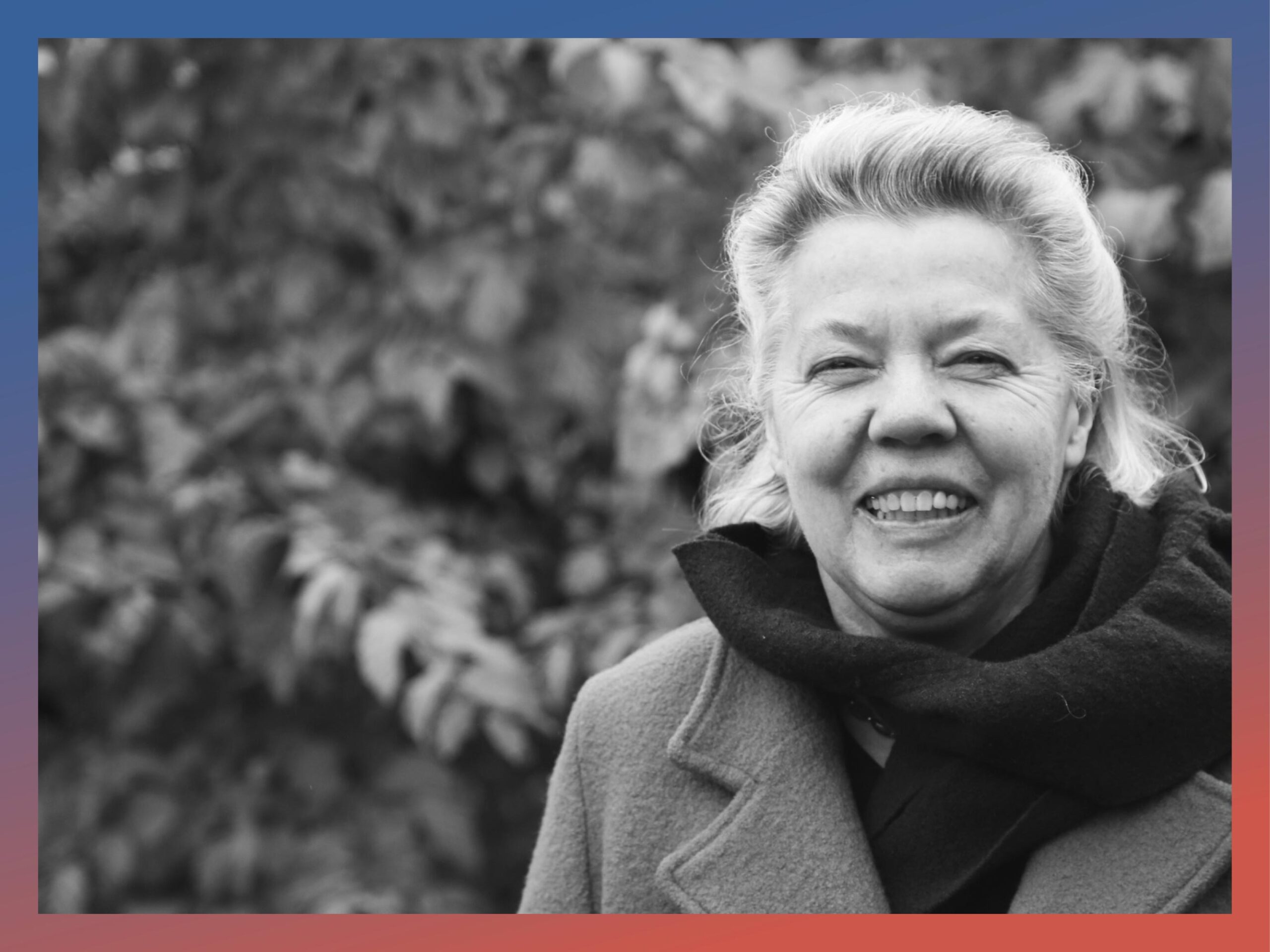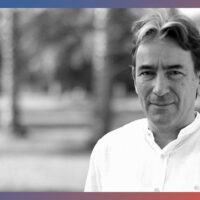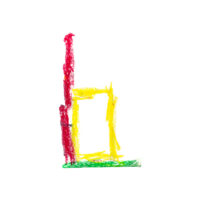The Goetheanum World Conference is an invitation to reflect on the next years of the anthroposophical world movement, and an opportunity to listen together to where we are and what needs to be done next. It is an invitation into shared visions and successful co-creativity. Christine Gruwez from Belgium will be there as a keynote speaker. Franka Henn interviewed her about her experience of the movement.
Christine, how has the world movement changed since you became part of it?
I perceive it as just that: a movement. It started for me in very concrete terms, in my immediate environment at the Waldorf school—the only one that existed in Belgium back then! There, I experienced how anthroposophy works and how effective it can become. Since then, I have come to know this effectiveness in many different contexts. I have moved further and further afield and experienced anthroposophy in Egypt, Lebanon, Europe, India, America, and Japan. But my beginning, my starting point—which I do not consider to be any center—was reinforced and deepened. I still consider myself to be someone who is “at the beginning.” In the anthroposophical movement, I experience this beginning in its various creations. ****Any creation that takes its start from the place of origin can only ever be a temporal form. All around the world, anthroposophy as a movement is not a fixed, acquired thing, or something that has fully arrived. Rather, what has been and is being created in Dornach manifests itself in different and dynamic ways—not as a center but as a place of beginning, as potential.
Have you experienced a change since you first visited the Goetheanum?
Yes. When I was there for the first time in the mid-70s, I had the feeling: now I’m going to the beginning—to the origin. At that time, everything that took place at the Goetheanum was in a language foreign to me, which is no longer the case at all. Sure, I had learned German and could even make myself understood reasonably well, but it remained foreign. Today, you can move around here in many languages. But above all, certain behaviors had to be understood. I did not know these “codes” and felt like an outsider—a stranger. Almost 50 years later, I feel I am standing here in the world, not at the center. It is clear to me that here and elsewhere, basically everywhere, I find myself at a place of origin. This creates an ever-deepening gratitude towards anthroposophy and its founder. For me, it’s about a process that moves between the beginning and that which wants to take shape. I can experience myself at the Goetheanum as at a fountainhead, at the place where it began—not as in a center. I experience this elsewhere as well. If I can manage that, then the world is directly here and not “out there.” It is in me.
The Creative Tension Between Center and Periphery
You make an effort to experience the periphery within yourself, don’t you?
Yes, but at the same time, I also experience myself at the center because, for me, there is no opposition between these two poles, only a fruitful and creative tension. Renewal can only emerge from such tension. It is the tension between the beginning of the creative potential of every human being and what seeks to be formed. We all carry such potential, even though it has yet to awaken. Today, the source of creativity is individual. Creativity individualizes itself, or is meant to individualize itself. I have potential within me, yet it does not belong to me. It is not a possession because it seeks to be creative out of itself. In other words, it wants to realize what it holds within itself. What, then, is the common ground? It is the process of this potential unfolding—everything that unfolds between the beginning and that which has been created! If each person takes just one small step and does so out of their potential, then co-creativity arises. For me, this means, for example, creating free spaces in which the potential of the other can reveal itself. We need to dwell with each other in this web, to support one another, without immediately passing judgment or desiring a result.
I hear in this that creativity in itself belongs to no one. So, we are all a part of the periphery, too. But creative activity, or the possibility of it, nevertheless exists within every human being. That is to say, every human being is also at the center of this anthroposophical movement, or indeed at the center of the world.
Yes, I carry creativity, but it does not belong to me. That is not a contradiction. It is the gift with which we are born. It does not belong to me, but I am responsible for it. It belongs to the other, to the world. This is another way of recognizing that the center and periphery are mutually dependent.
Creativity is our human gift. It does not belong to me, but I am responsible for it.
When we speak of today’s anthroposophical world movement, we can no longer think of a movement inaugurated or inspired by the Goetheanum, but one that always has new and multiple starting points. You called this “a weaving.” How do you see this space in the anthroposophical movement? How can we become more aware of this co-creation and grow in it?
Everyone with such alert, creative potential would have to cultivate the courage to start by being a fragment. That is, a shape that realizes itself in time and takes form but is ready to transition this form into the next. Because in such a process and tension, there can be nothing final of which we say: “Now we have it.” It will always be a form that lasts for a while—and for me, a while can easily mean two or three centuries. That is very short in the whole: these are the shapes of time, which are always only fragments of the whole. We carry within us the archetype of this whole. That is precisely what potential is; potential knows what completion might look like one day. That is why it can unfold from fragment to fragment.
What would completion look like for the anthroposophical world movement?
That the world has been thoroughly “impregnated” by what the future of humanity is, by what it means to become human. Anthroposophy is then entirely a part of the world, no longer different from the world. It is a continuous action being carried out. If I were to say “task” in this respect, I’m already fixing it too much. Still, perhaps the task of the anthroposophical movement today would be to preserve the possibility of becoming or being human because we are at a point where we are being obstructed and inhibited in this with increasing ferocity. We are less and less able to express our humanity, show it, and live it in the world unless we have the courage to be a fragment. By this, I mean weaving small in-between moments with each other or smaller contexts to preserve the possibility of becoming human. This does not work with elaborated forms; it would already be dead. Nevertheless, I experience this happening worldwide, both within and outside the anthroposophical scene: a blossoming of small, simple gestures of human togetherness.
Creating Space for Others
We have been speaking about the anthroposophical world movement, which at its core revolves around the creative power of the human being. The ideal is that the human being becomes wholly creative. But many more people who do not see this and who are not interested in it, who take a completely different path in life. How do we place ourselves in this context—how does co-creation succeed with anyone and everyone?
Creative potential is a gift of incarnation, meaning all human beings carry it within themselves. There is no human being who, insofar as they are human, does not possess such potential. All human beings have this creative faculty, whether they make something of it or not. This potential endows all of us with dignity. No one is excluded. Anthroposophy also builds on this by offering the instruments to penetrate it cognitively. That means not only comprehension but also realization and experience! The creative power of each individual counts in the joint process. For me, this means that when I co-create, it is not only my vision that counts but how I create space for the vision of my fellow human being with my vision. The temporal shape that a creation or movement takes on for a time before it disappears again should carry as many different voices as possible within it and allow them to work collaboratively on it, even if that means that the creation remains a fragment. The courage to be a fragment, to be unfinished, allows humanity to grow in us and makes us co-creators.
Translation Christian von Arnim





